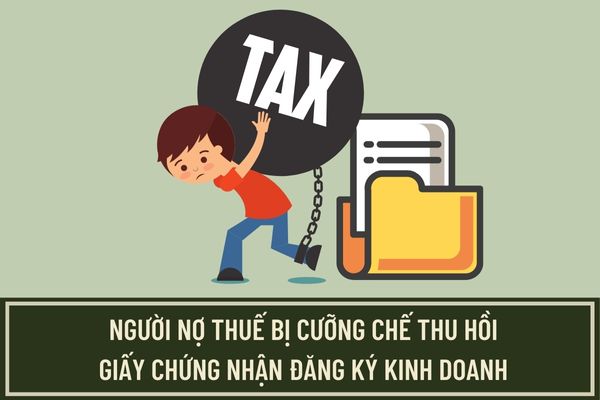How is the Revocation of Business Registration Certificate Enforced for Taxpayers with Outstanding Tax Debts?
Coercive Revocation of Business Registration Certificate for Tax Debtors: How is it Implemented?
Based on Sub-item 7, Section II, Part B of the procedure for coercively collecting tax arrears issued together with Decision 1795/QD-TCT in 2022, the steps in the procedure for coercively revoking the Business Registration Certificate for taxpayers with tax arrears include the following steps:
Step 1: Prepare a list of taxpayers subject to coercion
Step 2: Collect and verify information of taxpayers subject to coercion
Step 3: Prepare a list of taxpayers for whom a revocation proposal document must be issued
Step 4: Issue the revocation proposal document
Step 5: Send and publicly disclose the revocation proposal document
Step 6: Organize the implementation
Step 7: Restore the legal status for the business

Coercive Revocation of Business Registration Certificate for taxpayers with tax arrears: How is it implemented?
Restoration of Legal Status for Businesses after Coercive Revocation by Tax Authorities
Based on Point 7.7, Sub-item 7, Section II, Part B of the procedure for coercively collecting tax arrears issued together with Decision 1795/QD-TCT in 2022, the restoration of the legal status for businesses after coercive revocation of the Business Registration Certificate by tax authorities is carried out as follows:
Within the legally prescribed time for business registration, the taxpayer pays the entire tax arrears into the state budget; or the coercive amount has been decided by the tax authority to be paid in installments, tax payment has been extended, late payment penalty has been waived, or no late payment interest is calculated, and the taxpayer submits a written request for the restoration of the business's legal status. The official will then proceed as follows:
- No later than the next working day from the date of receiving the complete restoration request dossier, the official drafts the document proposing the restoration of the business's legal status, accompanied by the relevant dossiers:
+ Payment receipt to the state budget/Decision approving to pay the tax arrears in installments/Decision to extend the tax payment/Decision to waive the late payment penalty/Notice of no late payment interest.
+ Written request from the taxpayer for the restoration of the business's legal status.
+ Other relevant documents (if any).
- Submit to the department/team leader for submission to the tax authority leader to sign and issue the document proposing the restoration of the business's legal status.
- Within 3 working days from the date of receiving the complete restoration request dossier, the tax authority leader signs and issues the document proposing the restoration of the business's legal status, sending it to the business registration authority as per regulations.
Basis for Tax Authorities to Prepare a List of Taxpayers Subject to Coercion by Revoking the Business Registration Certificate
Based on Point 7.1, Sub-item 7, Section II, Part B of the procedure for coercively collecting tax arrears issued together with Decision 1795/QD-TCT in 2022, the first step in the procedure for coercive revocation of the Business Registration Certificate for taxpayers with tax arrears is to prepare a list of taxpayers subject to coercion.
The tax authority prepares the list of taxpayers subject to coercion by revoking the Business Registration Certificate based on the following grounds:
Taxpayer has tax arrears in one of the following cases:
- The taxpayer cannot apply the measure of collecting money or other assets held by a third party: Information has been verified but the coercion subject and related organizations and individuals do not provide information; or provide incomplete information; or provide information that the third party does not hold money or other assets of the coercion subject; or provide information proving that the amount to be coercively collected through the third-party collection measure cannot be collected.
- The taxpayer has applied the measure of collecting money or other assets held by a third party but there are less than 30 days remaining until the expiration of the coercion decision, and the coerced tax arrears have not been fully paid into the state budget.
- The taxpayer is being applied by the tax authority one of the following coercion measures: Suspension of invoice usage; Asset seizure and auction of seized assets; Collection of money or other assets held by a third party.
- The taxpayer has tax arrears and shows behavior of asset dispersal or absconding.
LawNet